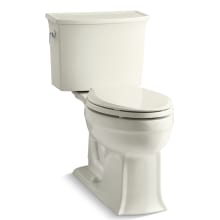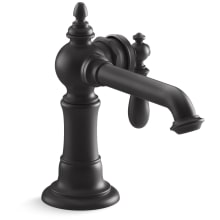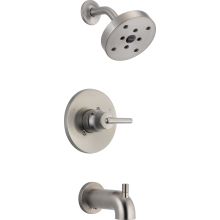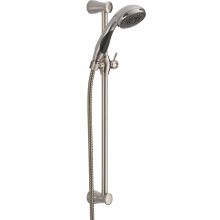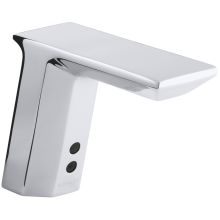10 Ways to Save Water in the Bathroom
Learn earth-friendly tips, tricks, and simple solutions for saving water in your bathroom.
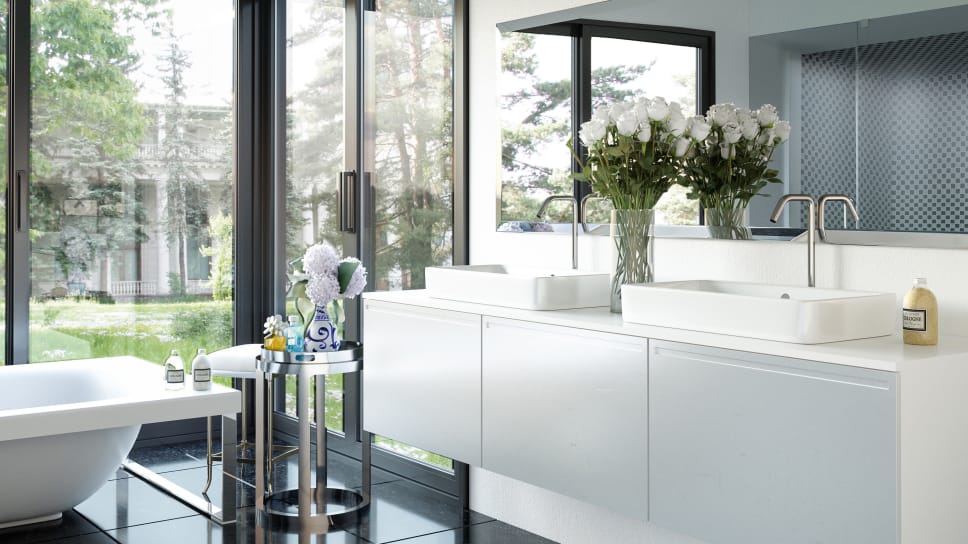
It’s estimated that the average American uses 80 to 100 gallons of water each day. We have clean water readily available for whatever use, no further away than our kitchen sink. In developing countries, the average daily use per person is 5.3 gallons of water. In some areas, this water has to be hauled in buckets from a community well or watering hole to get it home. Americans are fortunate enough to have water at our fingertips with the turn of a faucet handle.
Unfortunately, experts in 40 different states are concerned that if water conditions remain normal, there could be more water shortages around the United States. You don’t have to carry buckets of water from the neighborhood well to be more environmentally friendly. There are many ways to reduce your water footprint right at home.

1) Turn off the faucet.
Most dentists recommend that you brush for at least 2 minutes but there’s no reason to let the water run that long. For shaving, fill the bottom of the sink with a couple of inches of water to rinse your razor. If you can, skip shaving over the weekend to conserve water. When washing your hands, don’t let the water run while you’re lathering up. Only run the water when absolutely necessary.

2) Take showers, not baths.
A 10-minute shower with a low-flow showerhead only uses about 25 gallons of water. The average bath takes 35 to 50 gallons of water. Think of a bath as an occasional treat and make the switch to showers. To save even more water, take shorter showers. Time yourself through music. Ideally, you only want to spend one song (not an epic ballad) in the shower, about four to five minutes. There are plenty of products out there to help improve your bathtime karaoke performance with water-safe bluetooth speakers to bring in the tunes. You may even want to consider doing without a shower one day a week, on a day when you haven’t been working hard and aren’t very dirty.
3) Conserve shower water.
Put a bucket in the shower to catch the cold water while it’s warming up. Use this water to water your plants, flush the toilet, or to clean. Install a low-flow showerhead. It will be a small investment, but over time the savings add up. Install a showerhead with a quick shut-off valve to turn off the water while you’re washing your hair or lathering.
4) Fix leaks.
One single drip can cost you up to 20 gallons of water a day. Replace the washers and gaskets to keep faucets from dripping. Sometimes the toilet needs a tune-up; check to see if your toilet is leaking by adding a few drops of liquid food coloring in the tank. If you have a leak, you will be able to see the color in the bowl in as little as 15 minutes. Typically, you will only need to replace the flapper. Even if you have to replace a few parts, you will be doing your part to reduce your water footprint.

5) Redesign your bathroom.
A steam bath or shower can be quite refreshing and soothing. They use a lot less water than a traditional shower. Go with protective surfaces and finishes that are easier to clean with simple daily maintenance and less water used for scrubbing. While you’re remodeling, you can easily install other fixtures and shower systems that let you save money and conserve water. Investigate your existing water tanks and plumbing to determine what works best for your needs behind the scenes. Talk to your local plumber about the best ways to update your bathroom and be eco-conscious.
6) Get a low-flow toilet.
The toilet is a water hog. Older toilets use 5 to 7 gallons per flush. The average person flushes five times a day. That’s 30 gallons per day, per person, down the drain. Some low-flow toilets can use just a single gallon per flush. Replacing your toilet with eco-friendly products can be costly up front, but you’ll save money over time. Consumer Reports estimates that replacing old toilets can reduce your water consumption by 20 percent. If you feel as if you aren’t getting enough bang for your buck, no need to flush more often, look for high-efficiency products that get the job done.

7) Install water-saving appliances.
In addition to toilets and showerheads, there are many different innovations to save water in the bathroom. Reducing water delivery by as little as 45 percent with water-saving aerators can have a big impact. Auto-detect faucets can cut back on water consumption if your kids forget to turn faucets off or can’t manage them on their own. Don’t forget to save your receipts and installation costs; many manufacturers or local water companies offer money back rebates and other incentives for making a difference.
8) Hang up your bath towels.
Instead of getting a fresh towel after every shower, make yours last a little while longer. Hang it up to dry after use and it will still feel crisp and fresh after the next shower. This reduces the water needed to wash the towels, saving you time in the laundry room, too.
9) Harvest rainwater.
The rainwater that falls from your roof can be captured and used for non-drinking purposes in your home. The water is passed through a filter to remove any debris before it is stored in a tank underground. You can use this water to flush toilets, wash your vehicles, or water the garden when the weather gets dry. Although there is an initial investment, you may find rebates from your local water company. Check with your local ordinances to make sure that it is allowed in your community.
10) Be diligent in changing your behavior.
Having a low-flow shower is a great start, but if you’re still taking 25-minute showers, then you aren’t making a difference. While the acoustics may be perfect, keep the bathroom karaoke to just a song or two. Don’t use shower-time for brushing your teeth or shaving. When you do take a bath, put the plug in before you turn on the water and not after; you can adjust the temperature of the water as the tub fills. Think twice before leaving the water on while you brush teeth. Remember that towels can dry out and be used more than once rather than take up space in the laundry basket. Pick your change and stick with it.
It can be difficult to rethink how you do things. It can be even harder to teach your kids to change their behavior. But when you work together to do your part, you can feel much better about what you are doing to be more eco-conscious. Even small changes can make a big difference.

